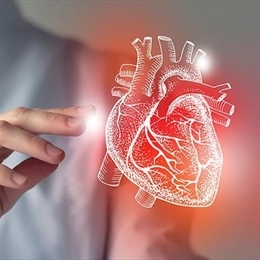Lung Cancer

Overview
Our lungs are two spongy organs in the chest cavity that allow us to breathe.
Lung cancer is a type of cancer that originates from lung tissues. The incidence of lung cancer is rising steadily worldwide, and it is the second most common cancer type. Moreover, it is the leading cause of cancer death in both men and women.
Risk Factors
Smoking is the most significant factor that causes lung cancer, and it is responsible for the great majority of lung cancer cases. Besides being an active smoker, exposure to cigarette smoke in the environment (passive smoking) is also a significant risk factor for lung cancer. It is believed that cigarette smoke triggers the mechanism leading to lung cancer by both the carcinogenic substances and chemicals it contains and damaging the bronchial and alveolar walls. The probability of lung cancer due to smoking is related to both the number of cigarettes smoked and how long you have been an active smoker. It is also known that the probability of lung cancer decreases over time if smoking is quitted, which causes or contributes to the onset of many extra conditions.
However, lung cancer may develop in individuals who have never smoked or have not been exposed to environmental cigarette smoke.
Among the known risk factors of lung cancer are exposure to asbestos and carcinogens as well as family history.
TypesLung cancer has two major types: small cell lung cancer and non-small cell lung cancer. Mesothelioma and carcinoid tumors are rare cancers of the lungs.
Symptoms
The early stage lung cancer usually does not cause symptoms, or it is manifested by non-specific symptoms that can frequently be seen in other diseases. These symptoms include:
• Chronic cough
• Blood in sputum (hemoptysis)
• Shortness of breath
• Wheezing
• Changes in your voice or hoarseness
• Unintended weight loss
• Bone and joint pains,
• Fluid accumulation in the chest
Prevention
• As is the case for all other cancers, prevention of lung cancer is also to eliminate or minimize manageable risks.
• Do not smoke or quit if you smoke.
• Do not allow people to smoke in your environment, or do not stay anywhere smoking is permitted.
• Toss all substances (radon, asbestos, etc) that are known to cause lung cancer out of your house and workplace.
• Have healthy eating habits. Prefer a diet rich in fruits and vegetables
• Exercise regularly, but consider your general health condition.
Diagnosis
If the imaging studies (CT, MRI, PET) that are ordered to investigate findings suspicious for cancer show a mass, a provisional diagnosis is made. The definitive diagnosis of lung cancer requires taking a biopsy specimen. The biopsy specimen is taken by bronchoscopy or surgery.
After the diagnosis of lung cancer is made, the next step is to determine the stage. Your doctor will evaluate the stage (I to IV) of your cancer based on a set of stringent criteria. You may think lung cancer is broadly staged as local, limited, regional, and distant.
Treatment
All data about the patient and tumor are collected, and the most appropriate treatment approach is determined. Treatment of lung cancer requires a rather arduous struggle. When possible treatment options are reviewed, weighing possible benefits against potential adverse effects and risks is necessary.
Although full recovery is the expected outcome for tumors that are confined to lung(s), treatment outcomes and survival rates may not be promising in cancers that have already spread to lymph nodes and distant tissues and organs. One of the most critical factors determining the survival is the stage of the tumor at diagnosis. Unfortunately, most lung cancer cases are diagnosed at the late stages (II or IV). Therefore, lung cancer is the leading cause of cancer death for both men and women worldwide.
Among the treatment options for lung cancer are chemotherapy, targeted treatment, radiotherapy, and surgery. These treatments can be used directly to treat the tumor, or they are instituted to increase quality of life and relieve symptoms in advanced-stage cancers. Moreover, treatment options can be used alone or in combination.
Chemotherapy
Chemotherapy uses drugs to treat the cancer. The active substances of medicines kill the cancerous cells. Chemotherapeutic agents can be given into a vein or be taken by mouth. In the case of intravenous administration, a thin tube, called a catheter, is inserted into a great vein, and the chemotherapeutic agent is administered through this catheter throughout the treatment period.
One or more than one chemotherapeutic agents can be administered depending on the type of cancer and response to treatment. Active chemotherapy maintained for a particular time is followed by an "off" period. After the "off" period expires, the therapy resumes. Each sequential active and "off" period is called a cycle. In early-stage lung cancers, chemotherapy may be started before or after the surgery to both improve the outcomes of surgery and enhance the survival rates. In advanced-stage and small-cell lung cancers, chemotherapy aims to relieve symptoms, improve quality of life, and extend life as much as possible.
Side effects of the chemotherapy are a function of the chemotherapeutic agent and the dose. The most common side effects of chemotherapeutics include fatigue, nausea, vomiting, mouth sores, hair loss, and inflammation of the digestive system. Your doctor will also treat side effects caused by chemotherapy. If these side effects are severe enough to threaten your health, your doctor may advise you to suspend the treatment or to switch you to another chemotherapeutic agent. Targeted Therapy therapies are newer anti-cancer treatments compared to chemotherapy. These medicines target specific abnormalities that are present in cancerous cells. Before these medicines are started, cancer cells are analyzed in laboratories to determine whether they have particular mutations.
Radiotherapy
Radiation therapy aims to kill cancer cells by using high-powered energy beams. If the radiation source is out of the body and the beams are directed at the cancer, this treatment is called external radiotherapy. On the other hand, if the radioactive agent is placed at the locus of the tumor through a needle or a catheter, the method is called internal radiotherapy (brachytherapy).
Although radiation therapy can be the first-line treatment, it is usually used to kill cells that can not be removed operatively. In the first-line treatment, radiotherapy is mainly combined with chemotherapy, and this modality is also called chemoradiotherapy. It is essential in relieving or eliminating pain, shortness of breath, and chronic cough in advanced-stage cancers.
If the lung tumor is tiny, stereotactic radiotherapy (radiosurgery) may help kill cancer cells by focusing radiation beams precisely on the tumor. In some cases, radiosurgery may remove the requirement for traditional surgery. However, patient selection is a critical issue for radiosurgery.
Radiotherapy has a vast spectrum of side effects depending on the body part irradiated. Sore throat, difficulty swallowing, fatigue, and loss of appetite are common side effects; you're your doctor will explain the risks that apply to you.
Surgery
Surgery is the first-line treatment for early-stage cases or tumors confined to the lung.
For lung resection, a segment, a lobe, two lobes, or the whole lung can be resected or surgically removed, and a wedge-like part of the lung is removed (wedge resection). Excluding wedge resection, all options are commonly referred to as anatomic resection.
Thoracotomy implies the open surgery carried out for lung resection. If technical means or patient and disease factors (location and spread of the condition) allow, minimally invasive surgery, video thoracoscopic surgery and robotic surgery are other options.
As thoracotomy offers the best exposure, a long incision is made at the level of the fifth rib, and the lungs are exposed.
All lung resections are major surgeries, so the patient should be very carefully prepped. A comprehensive physical examination follows a review of health history. Blood tests are planned in the light of signs and symptoms and biological examination data. Moreover, advanced imaging studies, such as CT, MRI, and PET/CT, are ordered to visualize the condition's stage and spread and plan the surgery.
Moreover, the patient is assessed by an anesthesiologist to manage anesthesia-related risks, and extra examinations are ordered if required. For lobectomy, the patient is transferred to the operating suite, and an intravenous access line is inserted. A soothing agent is infused through this IV line to relax or calm down the patient. A tube is inserted into the throat of the patient to maintain breathing during the surgery. After anesthesia is administered, the patient is placed in the left lateral decubitus position if the right lung is resected, or the patient is placed in the correct lateral decubitus position if the left lung is resected. If open surgery (thoracotomy) is carried out, an incision, measuring approximately 25 cm in length, is made at the level of the 5th rib at the relevant side, and the lungs are exposed. Small incisions are made for video thoracoscopic and robotic surgeries, and ports are inserted through the incisions. While a camera is inserted through one of these ports, other ports insert surgical tools into the chest cavity.
After lobectomy, lobectomy, pneumonectomy (removal of right or left lung altogether), or wedge resection, two drains are placed, one at the apex of the lung and the other at the base. These drains drain fluid, blood, and air that may accumulate in the body after the surgery.
Finally, the large or small incisions are stitched and closed with wound dressing.
Lobectomy – Bilobectomy
Lobectomy implies the removal of a whole lobe of the lung due to a lung pathology or primary or metastatic cancer. As three lobes (upper, middle, and lower) are present in the right lung, lobectomy is the simultaneous removal of the central lower or upper lobe. Thoracotomy is the open surgery method; however, if technical means or patient and disease factors (location and spread of the condition) allow, minimally invasive surgery, video thoracoscopic surgery and robotic surgery are other options.
The thoracic surgeon determines the best method regarding the patient and the condition by reviewing all criteria. Lobectomy is a significant surgery, and the artery that feeds the lobe and the vein that drains the dark blood in the lobe is tied and cut/divided. Next, the bronchi of the lobe are similarly cut, and the ends are closed. The lobe is dissected off the adjacent tissues and the nearby lobe.
After lobectomy operations, a cavity develops in the chest cavity, but it is filled in as the rest of the lobe(s) expand. Segmentectomy: Lobes of the lungs are divided into units called segments. A lung segment is a lung unit with its artery, vein, and bronchus. Ten segments are present in the right lung, while there are 8 in total in the left lung. Segmentectomy is the minorest of the anatomic resections. The basic principle is to tie and cut the artery, the vein, and the bronchus of the segment, occlude the end that is left inside the body, and dissect off and obliterate the segment.
Pneumonectomy
Pneumonectomy refers to the total removal of the right or left lung. It is preferred mainly for lung cancer patients who fulfill the necessary criteria. In the case of pneumonectomy, patients should be far more closely monitored, and fluid intake and electrolytes should be carefully monitored and managed.
Wedge resection: It implies anatomic resection of the lungs. This method is preferred for lung biopsies or removing lesions located at the periphery of the lungs. The periphery of the lungs is released in the form of a wedge or "V." Asking your questions about the treatment of lung cancer, your life after treatment, rehabilitation, pain management, clinical studies, and all the questions in your mind about the lung cancer to your doctor will help you for informed participation to your treatment and alleviating your concerns.




























